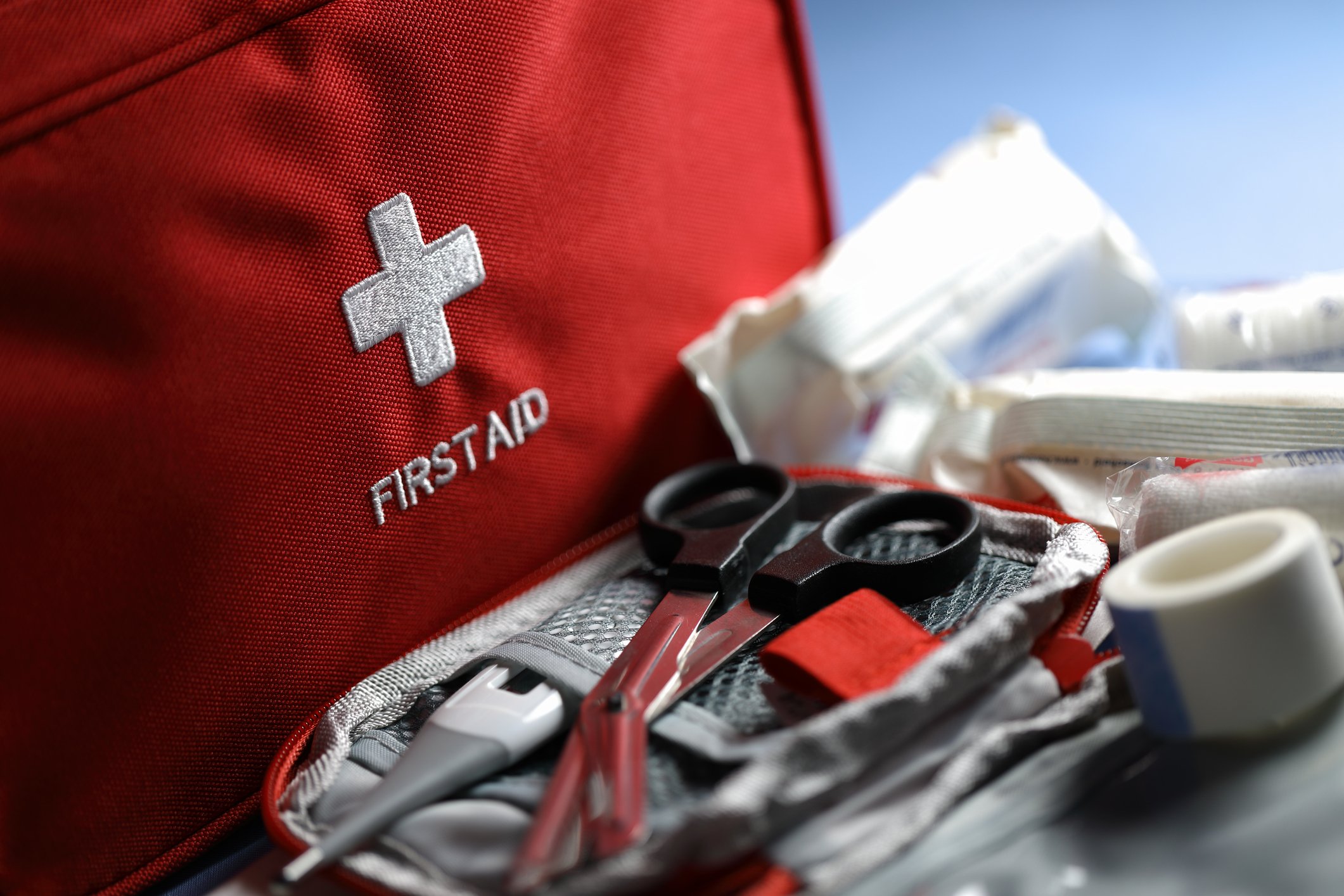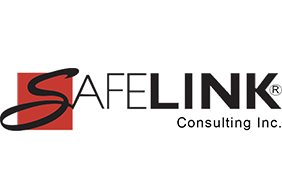In the event of an injury, are you complying with OSHA's requirement to provide a first aid kit, and to train an employee to render first aid? Most businesses do not understand how to comply with first aid requirements, and it may cost them and their employees.
Here are some of the latest CDC statistics to shed some light on the significance of injuries in America's workplaces.
2019:- 2.4 million workers sustained injuries that resulted in receiving treatment at an emergency department.
- For every 156 workers in the U.S., 1 was treated for injuries at an emergency department.
- 53% of injuries were caused by slips, trips, or falls, or from being struck by an object.
- 5,333 fatalities.
As you can see, injuries are more prevalent than one might think, which is why completing a detailed risk assessment for the potential injuries that could occur in your workplace is critical to keeping employees safe and reducing your liability.
OSHA states that in the absence of a hospital or emergency clinic in near proximity to the workplace that the employer must train an employee to render first aid, but they do not give exact details on what constitutes as "near". The full OSHA regulation can be found here. They also state that an adequate first aid kit must be provided, but they do not state exactly what supplies must be included. This can cause tremendous confusion for the employer trying to comply with this requirement and protect their workers. The reason OSHA does not specify to a more detailed degree is because, as you are aware, every workplace presents very unique hazards, and what is required should be evaluated on a case-by-case basis. OSHA leaves this responsibility of evaluating the potential risks and hazards up to each individual employer, but during an OSHA inspection the inspector's interpretation on what is needed will be enforced.
So, where do you start as an employer looking to comply and begin the process of gathering first aid supplies, placing them in your facility, and training/hiring employees to render first aid?
Step One
The first step is to assess what potential risk factors are present. For example, is your facility a manufacturing facility, packaging and shipping, laboratory, healthcare facility, or maybe you're a service provider that works in the field? Have a conversation with your staff about the safety concerns they have and assess the possible injuries that could occur. A great place to start is by evaluating any previous injuries your company has faced. What are the types of equipment you work with? How is the facility and equipment setup, and does it minimize the risk of injuries. Is there a risk of employees coming into forceful contact with objects, or rotating machinery? These are examples of items you should evaluate in your facility to determine what types of injuries may occur.
Step Two
Secondly, you need to determine if the closest first responder facility can respond quickly enough to begin providing treatment for the type of injury that can occur. Also, is there a hospital or emergency facility that has the capability to treat the potential traumatic injury? If you have done an adequate risk assessment and don't believe that first responders would be able to respond and transport an individual to a capable facility in an adequate time frame, then you must provide adequate first aid supplies, and employee first aid training or hire a staff member to render first aid. Remember, an OSHA inspector will do a similar evaluation and may not agree with your determination, so be as thorough as possible.
Step Three
Thirdly, you will need to determine a supply list to create an adequate first aid kit and determine what training should be required for a dedicated staff member. These critical components of your response capabilities in the event of an emergency at your workplace can save lives.
ANSI Z308.1-2015 Standard
OSHA typically recommends as guidance for first aid supplies the ANSI Z308.1-2015 standard. ANSI stands for the American National Standards Institute and they write recommendations for specific equipment requirements that many agencies adopt. OSHA will use ANSI’s minimum first aid requirements as a guide when citing a business if they don’t have adequate first aid supplies, so it’s important that you at least prepare these items. The ANSI standard breaks down the requirements for first aid kits into two classes. Class A kits will contain contents for handling common injuries in a workplace, such as minor and major traumatic wounds, minor burns, and eye injuries. Class B kits will contain additional items for more complex or high-risk workplaces where a broader range of hazards are present. Class B kits include everything that a Class A has, but in larger quantities, and in addition adds requirements for a tourniquet and a splint.
Here are the specific requirements according to ANSI.
Class A
- 16 Adhesive bandage, 1” x 3”
- Adhesive tape, 2.5 yd(total)
- 10 Antibiotic application 1/57oz.
- 10 Antiseptic, 1/57 oz.
- 1 Breathing barrier
- 1 Burn dressing (gel soaked), 4” x 4”
- 10 Burn treatment, 1/32 oz.
- 1 Cold pack, 4” x 5”
- Eye covering w/means of attachment, 2.9 sq in.
- 1 Eye/Skin wash, 1 fl. Oz.
- 1 First aid guide
- 6 Hand sanitizer,1/32 oz.
- 2 pk medical exam gloves
- 1 Roller bandage, 2” x 4 yd.
- 1 Scissors
- 2 Sterile pads, 3” x 3”
- 2 Trauma pad, 5” x 9”
- 1 Triangular bandage, 40” x 40” x 56”
Class B
- 50 Adhesive bandage, 1” x 3”
- 2 Adhesive tape, 2.5 yd(total)
- 25 Antibiotic application, 1/57oz.
- 50 Antiseptic, 1/57 oz.
- 1 Breathing barrier
- 2 Burn Dressing (gel soaked), 4” x 4”
- 25 Burn treatment, 1/32 oz.
- 2 Cold pack, 4” x 5”
- 2 Eye covering w/means of attachment, 2.9 sq in.
- 1 Eye/skin wash, 4 fl. oz
- 1 First aid guide
- 10 Hand sanitizer, 1 32 oz.
- 8 pk medical exam gloves
- 2 Roller Bandage, 2“x 4 yd.
- 1 Scissors
- 1 Splint, 4” x 24”
- 4 Sterile pads, 3” x 3”
- 1 Tourniquet, 1”
- 4 Trauma pad, 5” x 9”
- 2 Triangular bandages, 40” x 40” x 56”
These lists are very clear and they are the absolute minimum items you should have in your facility. The only room for interpretation here is determining which class would be required for your facility and making sure these minimums are sufficient for preparing your workplace for an injury. You must make sure that based on the hazards present in your facility and the possible injuries that could occur, you are assembling supplies based on either Class A or B.
Also, OSHA can consider a first aid kit non-compliant if certain items are missing, which would include if there were shortages in the quantity of supplies. Typically, one of the first items to be used is a box of adhesive bandages so make sure they are replenished often. It's important that the employer keep the first aid kit(s) stocked.
These requirements from ANSI are simply a minimum, and the bottom line is, it’s up to you to determine what’s necessary in your facility. It’s always better to err on the side of caution and be ready with more than you think you need.
How prepared is your business for an Emergency Response including weather related emergencies? Get a free checklist.
If you have any questions about completing an Injury Prevention and Emergency Response plan for your business or if you have an emergency response program that you would like us to review for you, contact us now! We specialize in Health and Safety as well as FDA Quality consulting for General Industry, Beverage Industry, as well as Dental Labs and Dental Practices.
Our goal at SafeLink Consulting is to help our clients meet the standards set out by OSHA and also state OSHA plans. We are available to provide businesses with assistance in the development of the programs that are required for compliance and the safety of their employees. If you need assistance, please contact SafeLink Consulting.
Learn more about OSHA's COVID-19 Emergency Temporary Standard.
Get notification when new regulatory compliance training courses are added plus upcoming events by subscribing to our email news.
Learn more about what SafeLink Consulting can do to help your business with compliance services, including safety compliance, to meet OSHA training requirements and quality system consulting to meet FDA compliance. SafeLink Consulting assists businesses with workplace safety training, infection control training, HIPAA training online, quality systems, assessments, audits, due diligence, and more.
Industries include:
Dentistry compliance - assisting the dental practice with meeting requirements for OSHA, HIPAA, EPA, and CDC guidelines, patient safety and employee health & safety
Dental Laboratory compliance - assisting the dental lab with meeting requirements for OSHA, FDA, and CDC guidelines, employee health & safety, plus FDA requirements for lab manufacturing custom implant abutment /gmp for medical device manufacturers
Medical Device Manufacturers compliance - assisting with meeting OSHA compliance & FDA requirements, GMP - good manufacturing practices
General Industry compliance - assisting with OSHA compliance and FDA compliance as it pertains to the specific business
Beverage Industry compliance - assisting beverage businesses such as the craft brewery, winery, cidery, distillery, vintner with meeting OSHA compliance, health & safety, FDA requirements / GMP - Good Manufacturing Practices.






Leave Comment